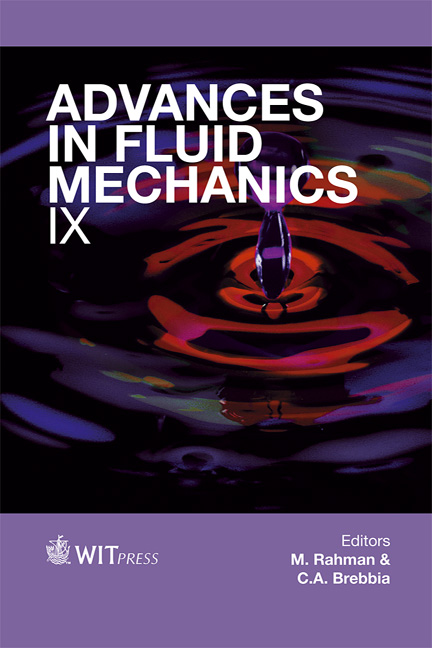Numerical Simulation Of Coaxial Turbulent Jet With And Without Discrete Particles
Price
Free (open access)
Transaction
Volume
74
Pages
15
Page Range
345 - 359
Published
2012
Size
686 kb
Paper DOI
10.2495/AFM120311
Copyright
WIT Press
Author(s)
K. Kumaran & R. Sadr
Abstract
Three dimensional, steady, turbulent flow RANS simulations are carried out to study the near flow field characteristics of a particle laden coaxial water jet. Spherical glass particles of 240 micron diameter are added to the central jet flow at two mass loading ratios of 0.074% and 0.22%. Numerical results for single phase flow are first compared with experimental data obtained using Molecular Tagging Velocimetry (MTV). The predictions of the axial velocity, axial turbulent intensity, correlation coefficient and vorticity are compared for singlephase and two-phase flow cases to bring out the effect of addition of particles on the fluid phase, while the numerical results show that the influence of the particles on the continuous phase flow field is minimal. Keywords: coaxial turbulent jets, particle laden, numerical simulation. 1 Introduction The study of particle laden, coaxial turbulent jets in a confined environment has been a subject of interest due to its implications in several applications such as jet mixers, sprays, particle separators, and combustion chambers in the field of chemical, industrial and mechanical engineering. The near field region of a coaxial jet, typically extending up five to six diameters from the nozzle exit, plays a crucial role in shaping the turbulent characteristics of the jet. This has a direct effect on the mixing process of the particle in a particle-laden coaxial jet. It is therefore important to understand the flow field in this region to better understand the details of particle-laden coaxial jets. A review of the literature pertaining to coaxial jet flows with and without the dispersed phase is presented next.
Keywords
coaxial turbulent jets, particle laden, numerical simulation.





